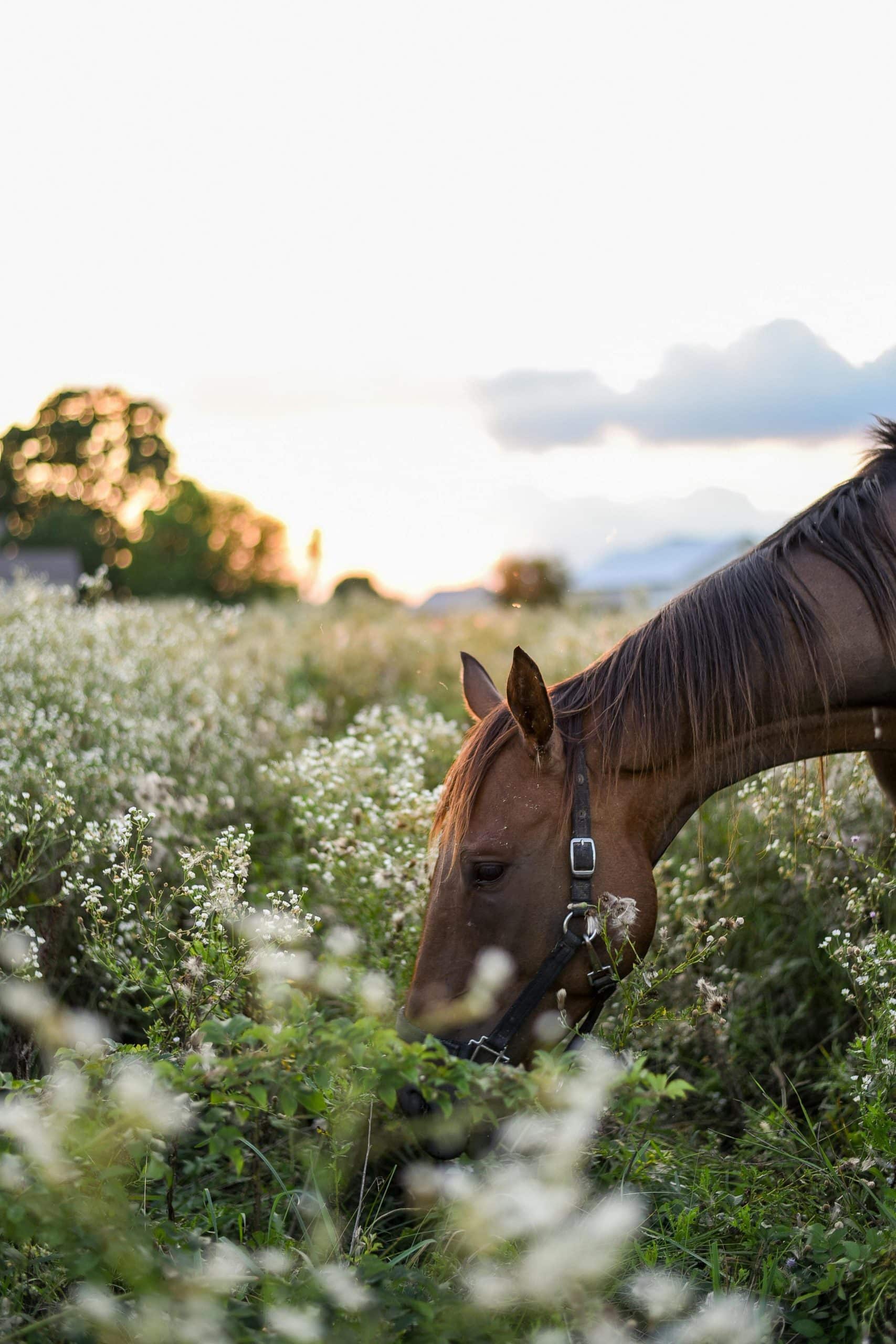Goldendoodles, the adorable crossbreed between a Golden Retriever and a Poodle, are rising in popularity as family pets. If you're considering adding a Goldendoodle to your family, one of the key aspects to consider is their litter size. Understanding the average litter size for Goldendoodles is essential for potential owners, as it can affect their responsibilities and expectations. In this article, we will explore what to expect when it comes to the litter size of Goldendoodles, providing valuable insights for those considering this lovable and lively breed.
Factors that affect the litter size
1. Parental size and breed
The size and breed of the parents play a crucial role in determining the litter size of Goldendoodles. Typically, larger parents tend to have larger litters, while smaller parents will have smaller litters. This is because the size of the parents can affect the space available in the mother's uterus for the puppies to develop.
2. Genetics and inheritance
Genetics also play a significant role in determining the litter size of Goldendoodles. The genes inherited from both the mother and father can influence the number of puppies produced. It is important to note that even if the parents have large litters, it does not guarantee that all the offspring will inherit the same trait.
3. Health of the parents
The overall health of the parents can impact the litter size as well. A healthy mother dog will have a better chance of carrying a larger litter to full term. Likewise, the health of the father dog can influence the quality of the sperm and the fertility of the female, which in turn can affect the litter size.
4. Age of the female dog
The age of the female dog also plays a role in determining the size of the litter. Generally, younger females have a higher chance of producing larger litters compared to older females. As a female dog gets older, her reproductive system may start to decline, leading to smaller litter sizes.
Average litter size for Goldendoodles
1. General range of litter size
On average, Goldendoodles have a litter size that ranges from 5 to 8 puppies. However, it is important to keep in mind that this is just an average, and individual litters can vary significantly.
2. Standard Goldendoodle litters
Standard Goldendoodles are larger in size and are typically produced by breeding a Golden Retriever with a Standard Poodle. Their litter size is usually on the higher end of the range, with 7 to 8 puppies being common.
3. Miniature Goldendoodle litters
Miniature Goldendoodles, which are created by breeding a Golden Retriever with a Miniature Poodle, tend to have smaller litters compared to their standard counterparts. A litter size of 4 to 6 puppies is common for Miniature Goldendoodles.
4. Toy Goldendoodle litters
Toy Goldendoodles, the smallest variety of Goldendoodles, are produced by breeding a Golden Retriever with a Toy Poodle. Due to their small size, their litter size is usually smaller as well, ranging from 3 to 5 puppies.

This image is property of images.pexels.com.
Breeding considerations
1. Breeding requirements
If you are considering breeding your Goldendoodle, there are several important factors to consider. Both the male and female dogs should be in good health and free from any genetic or hereditary diseases. It is essential to research and understand the potential risks and responsibilities associated with breeding.
2. Breeding methods
There are two primary methods of breeding Goldendoodles: natural breeding and artificial insemination. Natural breeding involves allowing the male and female dogs to mate naturally, while artificial insemination involves collecting and introducing the male's sperm into the female's reproductive system using various techniques.
3. Determining fertility and potential litter size
Before breeding, it is important to determine the fertility of both the male and female dogs. This can be done through various tests and evaluations conducted by a veterinarian. Additionally, the size and overall health of the female dog can give an indication of her potential litter size.
Care during pregnancy
1. Regular veterinary check-ups
Once your Goldendoodle has been successfully bred, it is crucial to schedule regular check-ups with a veterinarian throughout her pregnancy. These check-ups will help ensure the health and well-being of both the mother and the developing puppies.
2. Proper nutrition and diet
Proper nutrition is essential during pregnancy to support the health and growth of the puppies. Consult with your veterinarian to determine the appropriate diet and nutritional supplements for your pregnant Goldendoodle. It is important to provide a balanced and high-quality diet that meets her increased nutritional needs.
3. Exercise and rest
While it is important to maintain the overall fitness of your pregnant Goldendoodle, excessive exercise should be avoided. Provide her with regular exercise and playtime, but be mindful of not overexerting her. Additionally, ensure she has plenty of opportunities for rest and relaxation to support her health and well-being during pregnancy.
4. Monitoring the female dog's health
Keep a close eye on your pregnant Goldendoodle's health throughout her pregnancy. Monitor her weight, appetite, and behavior for any signs of distress or complications. Contact your veterinarian immediately if you notice any unusual symptoms or if you have concerns about her well-being.

This image is property of images.pexels.com.
Potential complications during pregnancy
1. Small litter syndrome
Small litter syndrome refers to a condition where the pregnant dog produces a smaller litter than expected or no puppies at all. It can be caused by various factors, including genetic abnormalities, hormonal imbalances, or underlying health issues. Early detection and intervention by a veterinarian are crucial to address this condition.
2. Pseudopregnancy
Pseudopregnancy, also known as a false pregnancy, can occur in Goldendoodles. This condition mimics the symptoms of pregnancy, such as nest building, swollen mammary glands, and behavioral changes, but there are no actual puppies. Pseudopregnancy usually resolves on its own, but veterinary guidance may be necessary if complications arise.
3. Miscarriage or stillbirth
Miscarriages and stillbirths can occur during pregnancy, and it can be a devastating experience for breeders. Various factors can contribute to these complications, including maternal health issues, genetic abnormalities, or environmental factors. Close monitoring, regular veterinary check-ups, and providing a safe and comfortable environment can help minimize the risk of these outcomes.
Preparing for the arrival of the litter
1. Creating a safe and comfortable whelping area
Creating a dedicated whelping area for your Goldendoodle is essential. This area should be warm, quiet, and free from any potential hazards. It should also provide enough space for the mother dog to move around comfortably while keeping the puppies safe.
2. Gathering necessary supplies
Before the arrival of the litter, gather all the necessary supplies you will need, including whelping pads, clean towels, a whelping box, scales for weighing puppies, and heating pads. Having these supplies readily available will help ensure a smooth and stress-free experience for both the mother and the puppies.
3. Educating yourself about labor and delivery
Educating yourself about the stages of labor and the signs of impending delivery is crucial. Familiarize yourself with the typical duration of each stage of labor, as well as potential complications that may arise. This knowledge will help you provide the necessary support and intervention if required.

This image is property of images.pexels.com.
Whelping process
1. Stages of labor
The whelping process in Goldendoodles typically consists of three stages. The first stage is characterized by restlessness and nesting behavior. In the second stage, the actual delivery of the puppies takes place. The third stage involves the expulsion of the placenta. Understanding these stages will help you better navigate the whelping process.
2. Recognizing signs of impending labor
As the delivery date approaches, there are several signs that indicate labor is imminent. These signs may include restlessness, panting, decreased appetite, nesting behavior, and the appearance of a clear discharge. Being able to recognize these signs will help you prepare for the arrival of the puppies.
3. Providing assistance if needed
In most cases, Goldendoodle mothers are capable of delivering and caring for their puppies without any assistance. However, there may be instances where intervention is required. It is important to be prepared to step in if complications arise, such as a prolonged delay between puppies, a puppy in distress, or difficulties with the birth process.
4. Handling the newborn puppies
Once the puppies are born, it is important to handle them with care. Ensure that each puppy is breathing properly and is able to nurse. Monitor their weight gain and general health in the first few days of their lives. Proper handling and care during the early stages will help the puppies thrive.
Post-birth care
1. Properly caring for the mother dog
After giving birth, the mother dog will require extra care and attention. Provide her with a comfortable and quiet space to rest and recover. Monitor her closely for any signs of postpartum complications, such as mastitis or infection. Ensure she has access to fresh water and encourage her to eat a nutritious diet to support lactation.
2. Helping the puppies thrive
The first few weeks of a puppy's life are critical for their development. Ensure that the puppies are nursing well and gaining weight. Keep their whelping area clean and warm, and provide them with appropriate socialization opportunities as they grow. Regular veterinary check-ups and vaccinations are also essential to ensure their health and well-being.
3. Early socialization and training
Starting from an early age, it is important to expose the puppies to various sights, sounds, and experiences to facilitate their socialization. This will help them grow into well-adjusted and confident dogs. Additionally, beginning basic training at a young age can set the foundation for good behavior and obedience.
4. Finding suitable homes for the puppies
As the puppies grow and develop, it is important to find suitable homes for them. Conduct thorough screening and ensure that potential owners understand the needs and responsibilities of owning a Goldendoodle. Provide them with necessary information, including health records and guidance on proper care and training.
Spaying or neutering considerations
1. The importance of spaying/neutering
Spaying (for females) and neutering (for males) your Goldendoodle is an important consideration. It not only helps control the population of unwanted puppies but also offers health benefits for the dog. Spaying or neutering can reduce the risk of certain cancers and behavioral issues.
2. When to schedule the procedure
The optimal time to schedule the spaying or neutering procedure for your Goldendoodle depends on various factors, including their overall health, growth rate, and the advice of your veterinarian. Generally, it is recommended to schedule the procedure between 6 to 12 months of age. Consult with your veterinarian to determine the best timing for your specific dog.
Conclusion
Understanding the factors that affect litter size, average litter size for Goldendoodles, and the entire breeding and whelping process is essential for any breeder or dog owner considering this journey. By being knowledgeable about the care, potential complications, and responsibilities associated with breeding, you can provide the best possible care for your Goldendoodle and their future puppies. Remember to consult with a veterinarian for professional advice and guidance throughout the process to ensure the health and well-being of both the mother and the puppies.


